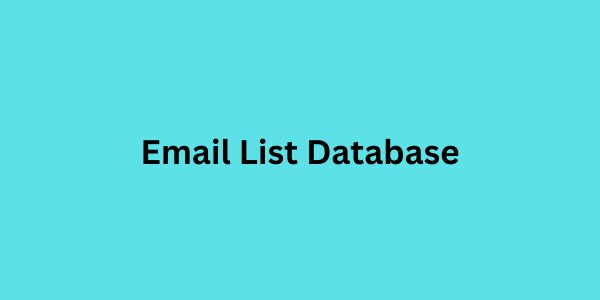Personalization is vital in crafting more relevant and engaging email content. In the modern digital landscape, consumers expect to receive messages that are actually aligned with their tastes, behaviors, and needs. General emails conceived for the mass market are less likely to capture the interest of recipients. Hence yielding lower open rates, click-through rates, and overall effectiveness. It is personalization that can turn the e-mail into something worthy, relevant, and effortless while building a good rapport with customers. Hence driving positive contributions towards marketing. Here is how personalization enhances your e-mail content.
1. Increases Relevance
At its heart, personalization ensures e-mail content Colombia Email Database is tailored to the person receiving it rather than the universal public. It can be as basic as adding the recipient’s name to the subject line or greeting, or as sophisticated as recommending content based on past behavior or purchase history. Relevant e-mails are far more likely to resonate when they’re actually about the recipient than if the emails had to do with something else. People are more likely to open and act on emails which speak directly to their own needs and interests. For example, a fashion retailer could offer personalized recommendations based on previous purchases or browsing history to make the content most relevant to the customer.
2. Enhances Engagement
Personalized emails have proved to drastically raise the bar on many engagement metrics, including open rates, click-through rates, and conversions. Personalization of subject lines, copy, and content to the individual’s behavior creates a sense of connection from the brand to the customer. Personalization sets off the psychological principal of reciprocity-when it feels like a message was crafted for just them, prospects are more likely to take action with the brand. Studies show that emails with personalized subject lines see a 26% higher likelihood of being opened, while personalized calls to action increase conversion rates by well over 200%.
3. Behavior-Based Triggers
The best ways to personalize email content are through behavior-based triggers. These are those emails that are sent based on some action taken by the recipient, be it cart abandonment, browsing within a product category, or newsletter sign-up. The relevance of this form of triggered email is just high, as it is directly in connection with some activity of the recipient or stage in the customer journey. For instance, a travel company can send special offers on flights by email after a user has searched for flights but hasn’t book. The timeliness here adds to the relevance and will surely increase the chances of converting the receiver.
4. Segmented Email Campaigns
Segmentation is an important personalization technique. Marketers can also segment their lists according to demographic, purchase, and/or engagement habits in order to shrink the list and make it targete. By this, it enables them to compose email content relevant to different audience segments. It provides more specific messaging with offers in three different categories that answer the unique needs of each segment. For example, a brand could send different promotional offers to first-time buyers. Loyal customers, or customers who haven’t bought anything in a while. These segment campaigns typically result in much higher engagement and conversion rates than the blanket email campaigns sent to the ‘entire’ list.
5. Dynamic Content
Personalization can also be extende a Brazil Consumer Email Data step further through the use of dynamic content. This is done through real-time data that instantly changes parts of an email, depending on the preferences or behaviors of a recipient. Such cases include when a retail company can dynamically change which products appear in an email. Depending on what a customer has been browsing, or a media company may personalize recommendations at the end of a piece of content base on what a user has been reading or watching. It means with dynamic conten. A more personalize experience can be done without necessarily having to literally create dozens upon dozens of individual emails, making it even more efficient while keeping communications highly relevant.
6. Improved Customer Relationships
Eventually, personalization in email marketing instills a sense of trust and loyalty between brands and their customers. If consumers get to receive content addressing their needs and preferences. They feel appreciate by the brand. The personal touch creates emotional connections that may be translate into long-lasting customer relationships. Brands that can follow through with relevant and personalize content on a regular basis. Will be better positione to retain customers and nurture lifetime value.
Conclusion
Personalization drives relevance, engagement, and conversions in email marketing. From simple name insertions to advance dynamic content. Personalization allows brands to communicate in a way that can feel like one person speaking directly to another. Going forward, data and technology that drive highly relevant email content will play an increasingly bigger role in marketing success.



